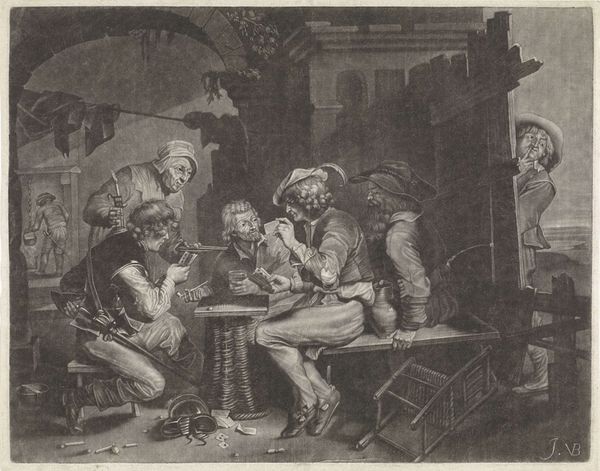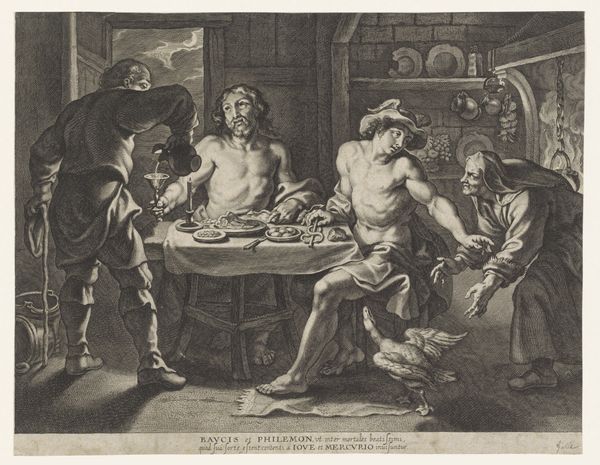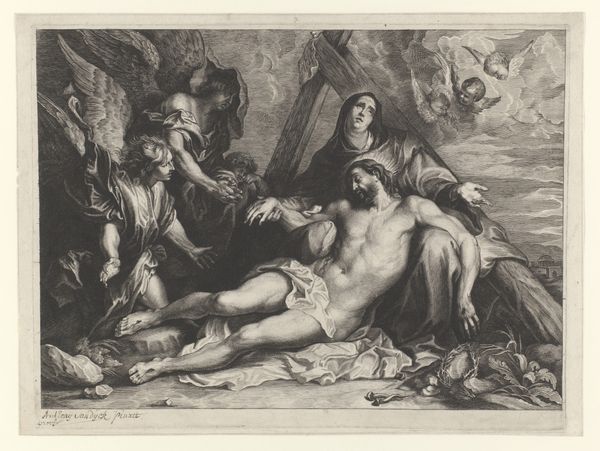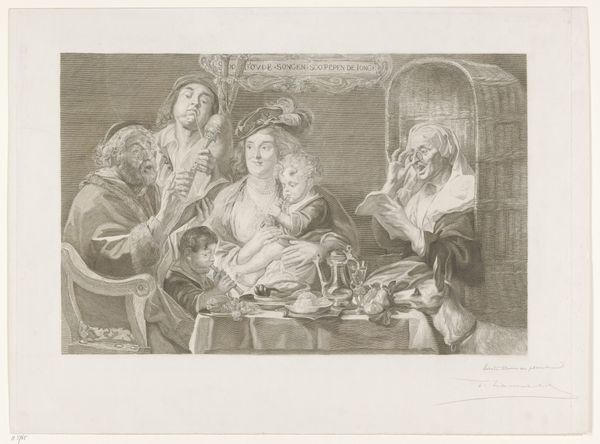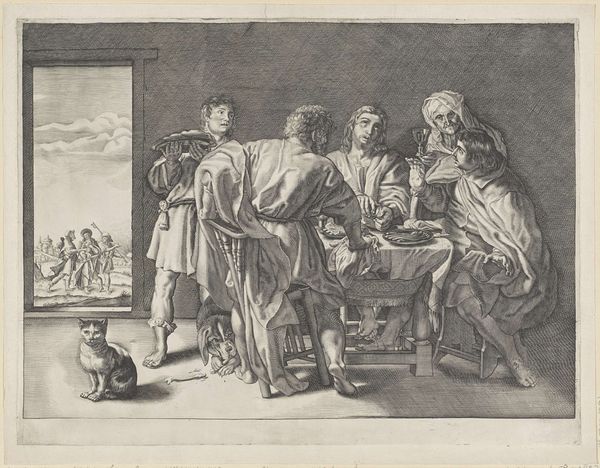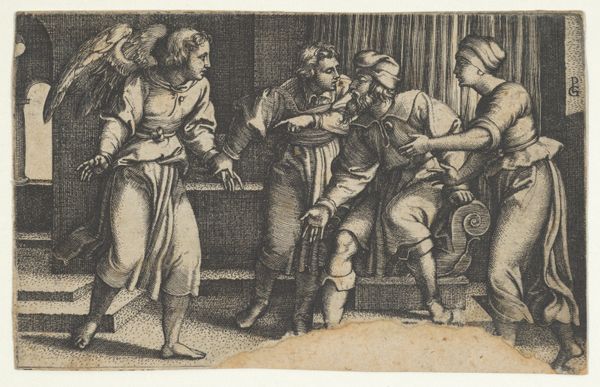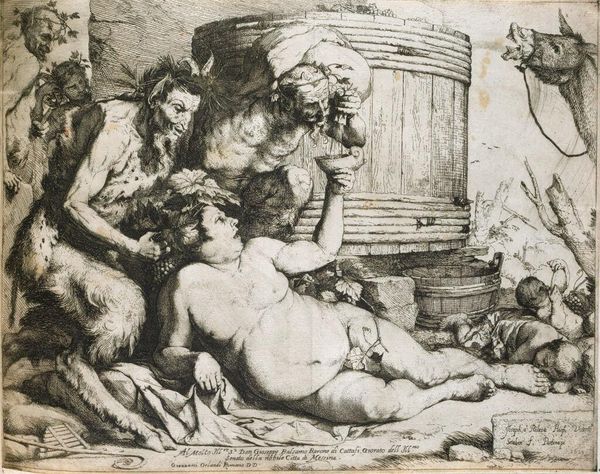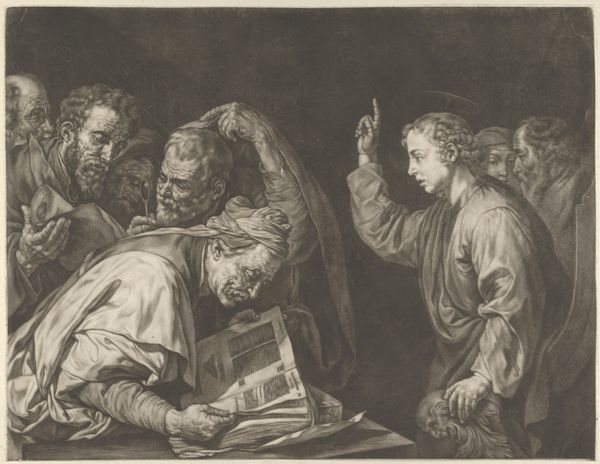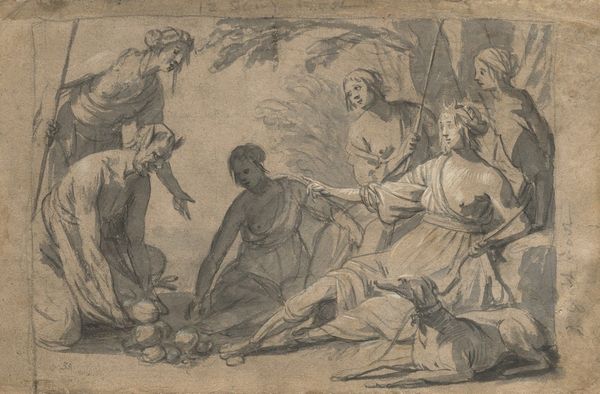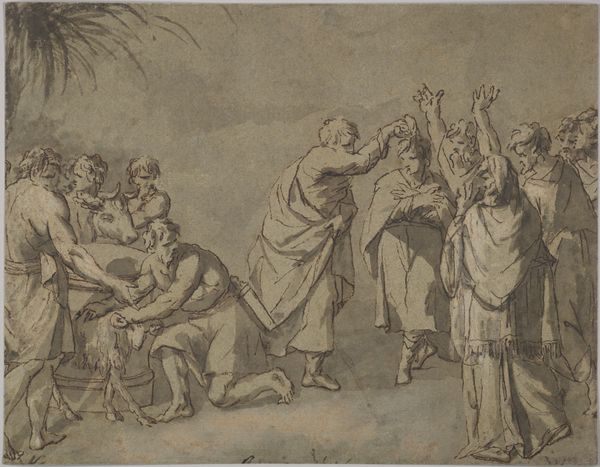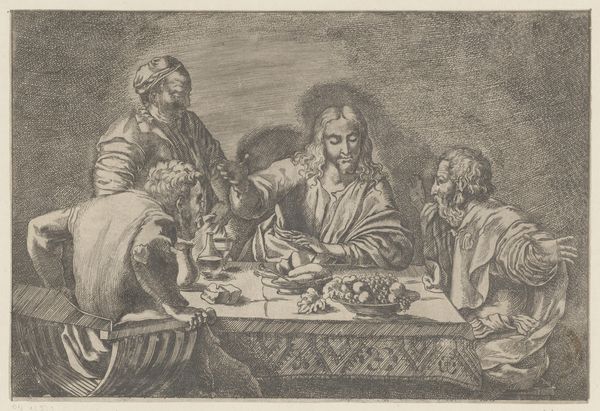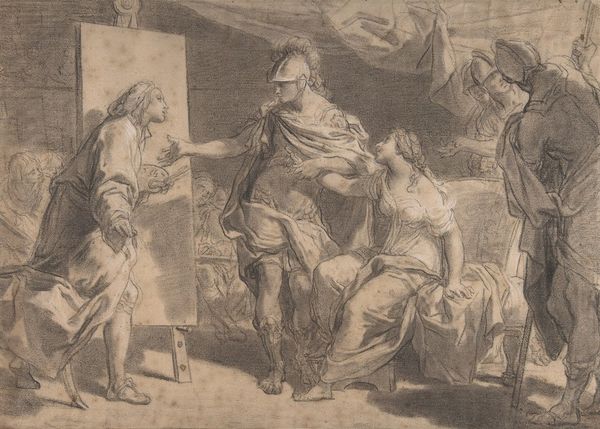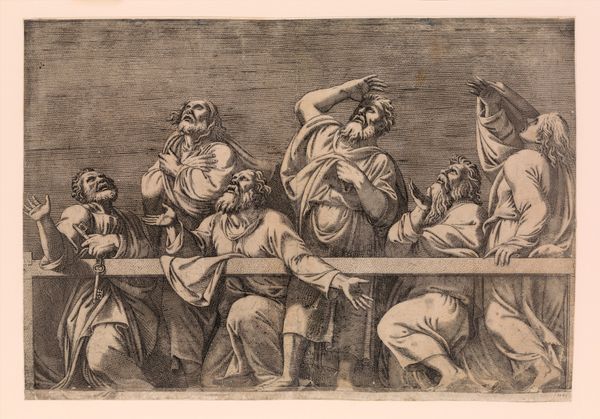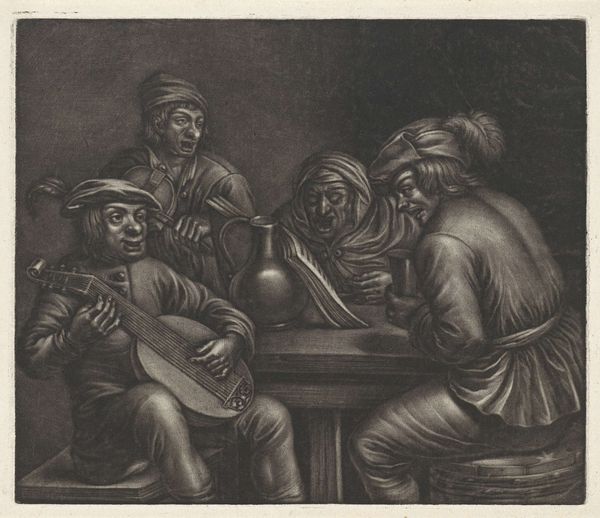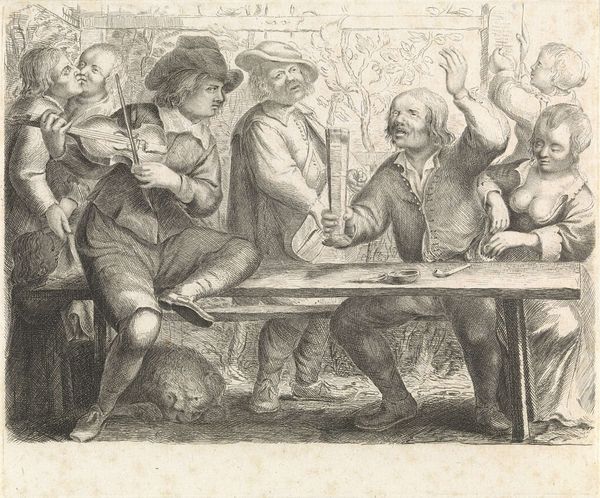
Card and Backgammon Players. Fight over Cards 1616 - 1626
0:00
0:00
canvas
#
character portrait
#
possibly oil pastel
#
oil painting
#
canvas
#
neo expressionist
#
underpainting
#
facial painting
#
painting painterly
#
portrait drawing
#
abstract character
#
portrait art
Dimensions: 150 cm (height) x 241 cm (width) (Netto), 172.2 cm (height) x 262.6 cm (width) x 8.2 cm (depth) (Brutto)
Editor: Here we have "Card and Backgammon Players. Fight over Cards" by Theodoor Rombouts, dating from 1616 to 1626. It’s an oil painting on canvas. The first thing that strikes me is the dramatic contrast of light and shadow. What do you make of the composition, considering its seemingly chaotic nature? Curator: The artist masterfully orchestrates a visual drama through the interplay of light and darkness, or chiaroscuro. Note how the light illuminates specific areas – faces, gestures, and fabrics. How does this selective illumination guide the viewer's eye through the scene? Editor: It highlights the key moments of the fight, and separates some figures from each other... so the brightest areas carry a certain narrative weight. It seems to intensify the emotional charge. Curator: Precisely. The dramatic composition and bold brushwork enhance the theatrical nature of the scene. Consider, for example, the contrasting textures – the smooth skin of the central figure versus the rough fabrics and agitated hand gestures. Editor: The level of detail in their expressions is so striking, adding to the heightened drama! What do these strong contrasts between light and texture bring to the narrative here? Curator: Through formal contrasts like these, Rombouts amplifies the overall emotional tenor of the piece. The very tension between stillness and explosive movement serves to captivate the observer, doesn’t it? Editor: Absolutely! Analyzing the composition this way has given me a completely different perspective. It's much more intentional than I initially perceived. Curator: Indeed! Looking at it this way shows the mastery within the arrangement. It also shows how we can approach any piece to dissect what went into it.
Comments
statensmuseumforkunst almost 2 years ago
⋮
In a tavern a card player has drawn a knife and is about to attack his victim, firmly grabbing his short hair. The victim, a fellow player from the other side of the table, cries out and seeks to ward off the blow with an open hand. The light falls harshly onto this brawl from the left, accentuating the drama of the tense situation. The card players, the half-figure composition, the realism, and the stark contrast between light and darkness (chiaroscuro) are all elements borrowed from the Italian Baroque artist Caravaggio, whom Rombouts got to know during a prolonged stay in Italy. By making uncontrolled anger the main subject of the painting the Flemish painter draws on an ancient Dutch tradition for creating moralising depictions of the seven deadly sins. Wrath was one of them.
Join the conversation
Join millions of artists and users on Artera today and experience the ultimate creative platform.
